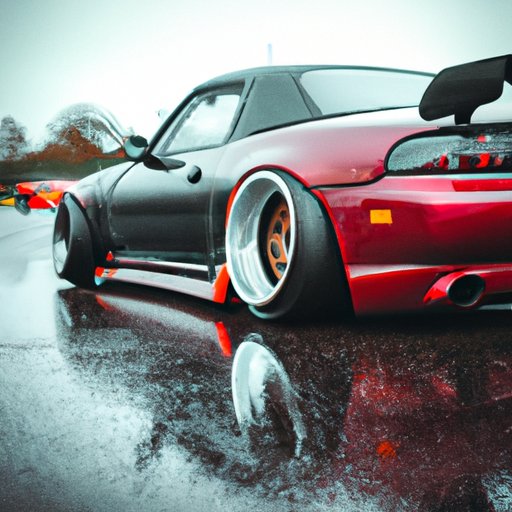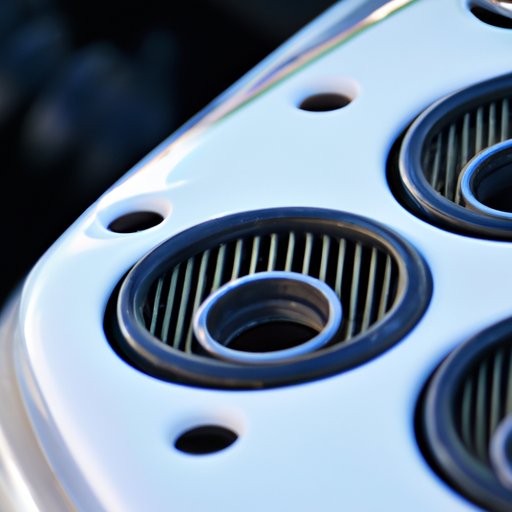Exploring JDM: Understanding the Culture of Japanese Domestic Market Cars
Car enthusiasts worldwide are drawn to the world of JDM, or Japanese Domestic Market, cars. With a unique blend of style, performance, and technological advancements, JDM imports have captured the hearts of car enthusiasts around the globe. This article will explore what JDM cars are, why they are so essential to car enthusiasts, and highlight the top 10 JDM cars you need to know.
An Introduction to JDM: What is it and Why is it Important?
At its core, JDM refers to Japanese cars made specifically for the domestic market in Japan. These cars are designed with innovative technology, advanced features, and precision engineering. JDM cars are known for their unique style, aerodynamics, and performance enhancements, making them highly sought-after by car enthusiasts all over the world.
Enthusiasts of JDM cars are passionate about the culture surrounding these cars. The JDM culture includes the appreciation of modification, tuning, and customizing cars to create a unique vehicle that matches their personal tastes and style. For many car enthusiasts, JDM not only signifies a performance-enhanced car but also the art of car customization and personalization.
When exploring the world of JDM cars, it’s essential to understand its origins. After World War II, Japan’s automotive industry was in shambles, and automakers struggled to rebuild. But soon, companies like Toyota, Nissan, and Honda gained momentum and became top leaders in the automotive industry. JDM’s increasing popularity can be traced back to the 1990s, where car enthusiasts took notice of Japan’s unique technological advancements and design philosophies.
Examples of JDM cars include the 1998 Subaru Impreza WRX STI, 1999 Nissan Skyline GTR R34, 2000 Honda S2000, and the Mazda RX-7. These cars are often highly modified with aftermarket parts to increase their performance, visual appeal, and power.
JDM vs. American Muscle: A Comparison of Two Cultures
American muscle cars and JDM cars share a few similarities, including a strong and passionate fanbase, a love for modifying cars, and a belief that cars should be more than just machines. However, they have many differences, including aesthetic, mechanical, and cultural differences.
American muscle cars are known for their large engines, aggressive looks, and high horsepower. JDM cars are designed with small engines, sleek, and aerodynamic body builds. JDM cars focus on precision engineering, handling, and agility, while American muscle cars prioritize power, speed, and performance.
One cultural difference between American muscle and JDM cars is the age of the car enthusiasts attracted to each scene. American muscle cars often appeal to older generations of car enthusiasts who grew up owning or riding in these classic cars. In contrast, JDM cars’ popularity continues to grow among younger car enthusiasts who appreciate the latest technology and unique styling.
The Top 10 JDM Cars You Need to Know
Now that you have an understanding of what JDM cars are and how they differ from American muscle cars, let’s take a look at the top 10 JDM cars you need to know.
10: 1985 Toyota Sprinter Trueno GT-Apex (AE86)
9: 1992 Mitsubishi Lancer Evolution I
8: 2002 Impreza WRX STI Type RA Spec C
7: 1995 Toyota Supra Twin Turbo
6: 2000 Acura Integra Type R
5: 1991 Nissan Skyline GTR R32
4: 2004 Mitsubishi Lancer Evolution VIII
3: 1999 Nissan Skyline GTR R34
2: 2000 Honda S2000
1: 1993 Toyota Supra Turbo
Each JDM car on this list has its unique features, including iconic styling, significant technological advances, and impressive performance capabilities. Shopping for a specific JDM car and adding customized parts is the perfect way to showcase personal style and preferences.
JDM Tuning: Techniques and Best Practices
JDM tuning is a significant part of the JDM culture, and enthusiasts spend thousands of dollars on modifications to transform their car. There are a few essential techniques and best practices for JDM tuning that every enthusiast should know.
It’s essential to purchase high-quality parts for JDM tuning. Poor-quality parts can impact the car’s performance and longevity. It’s best to research the parts and brands before purchasing and to invest in proven and reputable brands.
Finding a knowledgeable mechanic with experience in JDM tuning is critical. A mechanic with experience in JDM tuning understands the unique needs of each car and can help achieve the desired results. They can also diagnose and fix any issues that may arise during the modification process.
Once the modifications are complete, it’s important to perform regular maintenance and testing on the JDM car regularly. This helps ensure that the car continues to operate at peak performance levels and extends the life of its components.
The Evolution of JDM: A Look Back at the History of the Japanese Car Industry
Understanding JDM culture and its roots requires knowledge of Japan’s automotive history. During the 1960s and 1970s, Japanese automakers focused on creating smaller and more efficient vehicles. In the 1980s, Japanese manufacturers began to prioritize innovative technology.
During the 1990s, JDM cars increased in popularity due to the introduction of the Nissan Skyline GT-R and Toyota Supra. By the end of the decade, JDM enthusiasts around the world were importing cars from Japan and customizing them to their preferences.
Today, JDM culture continues to thrive as automakers like Toyota, Honda, and Nissan continue to release innovative cars that appeal to car enthusiasts worldwide.

JDM Culture Around the World: How Enthusiasts are Celebrating and Sharing Their Love for JDM Vehicles
The JDM culture exists worldwide, with enthusiasts coming together to share their love for modified Japanese imports.
Car shows and meetups are popular ways for enthusiasts to connect and showcase their JDM cars. These events feature a wide range of JDM cars, from old classic models to new and modified vehicles.
Enthusiasts also use social media platforms like Instagram and Facebook to share photos of their cars and connect with other enthusiasts worldwide.
Conclusion
Exploring JDM culture provides a glimpse into the world of innovative technology, precision engineering, and unique styling. JDM cars are more than just vehicles; they are a means of self-expression and personalization. Understanding JDM culture and tuning practices can help car enthusiasts appreciate the art of car modification and showcase their unique style and preferences. Get involved in the JDM scene through a car show or social media platform, and become a part of the ever-growing community.
